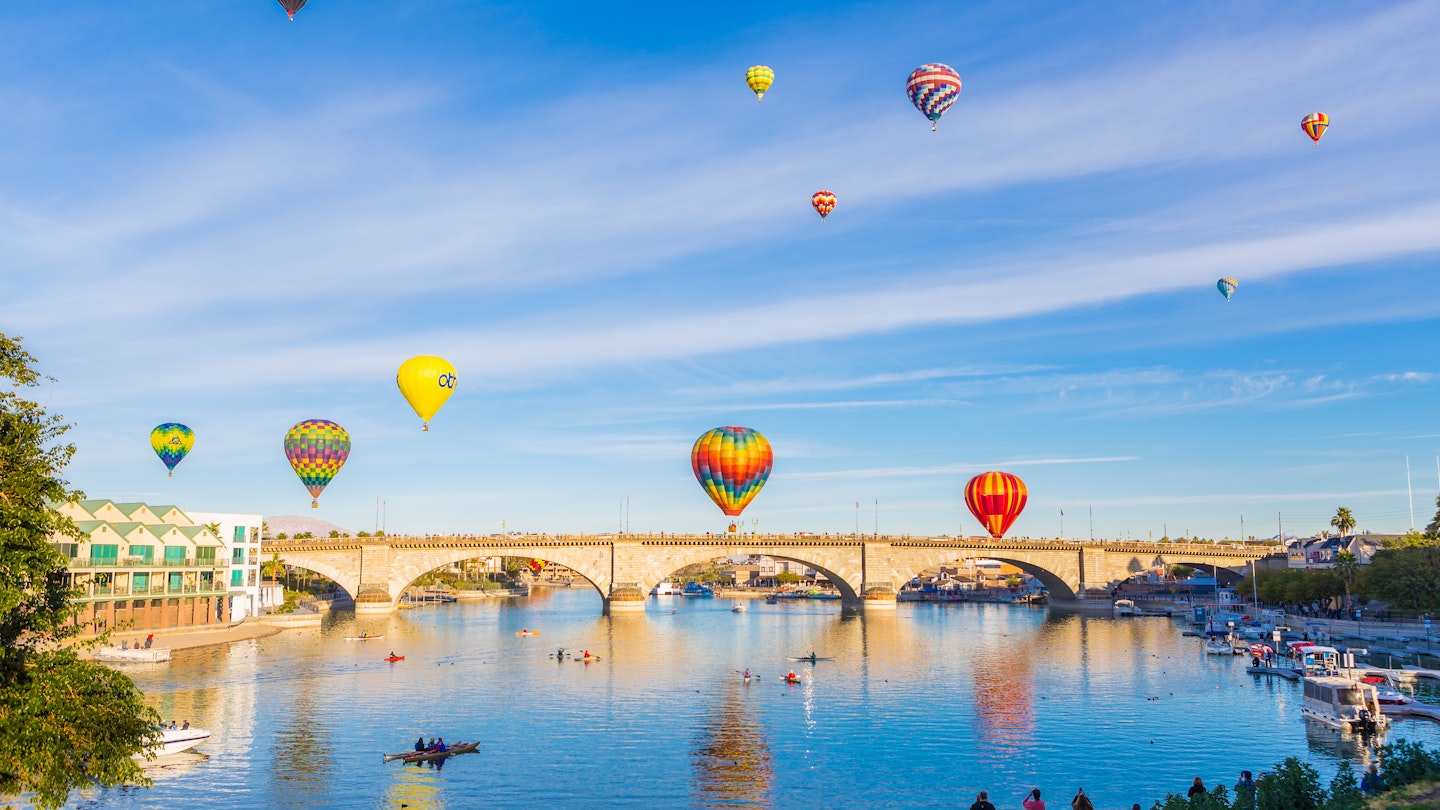Best Times to Visit Arizona
Bold, big, and beautiful, Arizona has plenty to brag about. Framed by New Mexico, Utah, Nevada, and California, with Mexico at its southern reaches, the state enjoys more than 300 days of sunshine a year and has four distinct seasons. You can bask in summer, hike and bike in spring and fall, and ski in winter.
Arizona‘s sprawling deserts and massive mountains provide a range of weather conditions year-round, ensuring there are always activities to enjoy. However, hotel rates can vary significantly depending on the season. Spring and fall typically have the mildest weather, attracting crowds statewide. Summer can be scorching in the south, but low humidity and monsoon rain showers from June to September help keep the heat in check.
Famed as the gateway to the Grand Canyon, Arizona offers high-elevation hiking trails and mountain wineries set in cooler climates. Phoenix is Arizona’s top winter destination, attracting travelers chasing the sun, while excellent skiing is available at Arizona Snowbowl near Flagstaff and other mountain resorts.
Fall and Winter: Ideal Seasons to Visit Arizona
Arizona’s diverse climate means temperatures can soar above 100°F in places like Tucson and Phoenix, while higher-altitude areas such as Flagstaff and the North Rim of the Grand Canyon remain pleasantly cool. Although spring brings fragile desert flowers, fall provides the best hiking weather. Both seasons are delightful for outdoor activities, but they are also the busiest, so planning your trip ahead is crucial.
Arizona boasts a vibrant wine scene, including tasting rooms in the Verde Valley, Sonoita, and Willcox. The optimal weather during fall encourages visitors to indulge in local wine and food festivals. However, be prepared for crowded accommodations and restaurants.
During winter, northern regions can see temperatures drop as low as 42°F, while higher-elevation cities like Sedona and Flagstaff experience snow, marking the beginning of ski season that lasts into spring. The unique holiday celebrations in December, featuring festive light displays and desert decorations, add to the charm of the state.
Spring: A Season for Outdoor Enthusiasts
Springtime in Arizona is perfect for sports enthusiasts. March marks the beginning of Major League Baseball’s spring training in Phoenix. For those preferring outdoor activities, Sedona’s extensive multi-use trails and annual mountain biking festival await.
With warmer days, the blooming wildflowers peak in May. Visitors can explore Saguaro National Park, where iconic cactuses showcase their beauty. May is also ideal for enjoying nature through birding events or eco-conscious films.
Spread across the Sonoran, Mojave, and Chihuahuan deserts, Arizona invites nature lovers to explore its moderate temperatures in the central and northern regions while summer heat drives locals south. Campgrounds and lodging fill quickly during this time, so plan accordingly for a comfortable visit.
In southern Arizona, temperatures range from the high 60s to the high 80s. Towns like Phoenix, Tucson, and Tombstone serve as ideal bases for exploring these stunning ecosystems. Early morning adventures help avoid midday heat while enhancing wildlife spotting opportunities.
June: Last Chance Before Summer Heat
June presents a unique opportunity to travel the historic highways of Arizona before the temperatures rise. Whether seeking quaint towns or serene desert sanctuaries, now is the perfect time for a road trip. Visitors can also take advantage of Sedona’s PhotoFest for capturing the region’s stunning landscapes.
As July approaches, many residents seek cooler weather or weekend getaways for fishing and water sports. Consequently, hotel rates can spike during busy weekends. However, Flagstaff’s annual celebration of Indigenous heritage and the Celtic festival in Williams provide culturally enriching experiences.
Although August sees the entire state in reliable heat, the low humidity and cooler nights allow for enjoyable activities like moonlit hikes, museum visits, and spa retreats. Alternatively, heading to the pine forests offers a refreshing escape.




